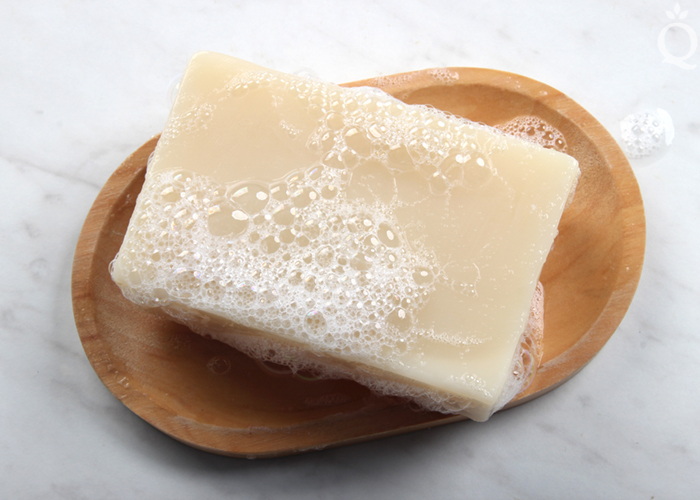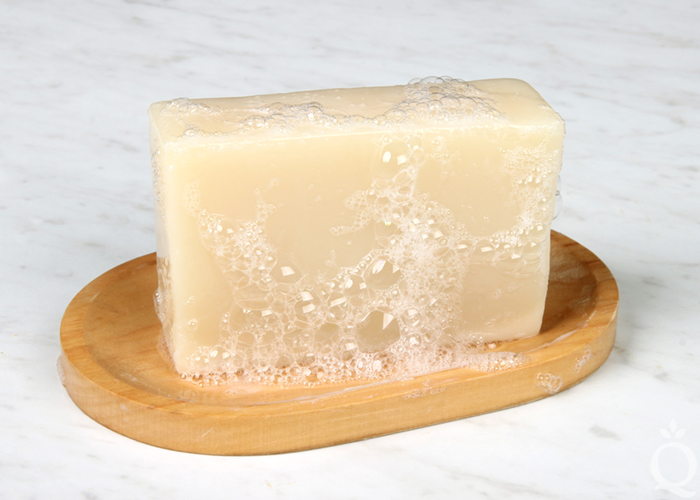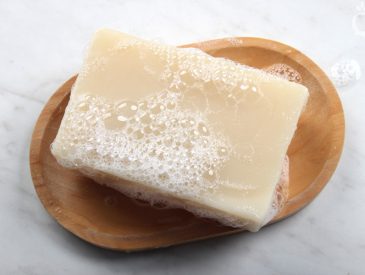
It’s best to start with an easy recipe when making cold process soap for the first time. The Beginner’s Cold Process Soap Kit is specially designed for just that – it includes ingredients for a simple and straightforward bar of soap.
The Beginner’s Cold Process Soap Kit is one of our oldest kits, so it was time for an update. It now includes a durable silicone mold for perfectly-shaped bars every time. It also comes with printed, easy-to-follow instructions to make the process as smooth as possible.

If you’ve never made cold process soap before, the Basics of Cold Process Soapmaking video series on Soap Queen TV is a great place to start learning. It covers soap basics like lye safety and how to use fragrance oils. After your first batch, you’ll be hooked.
The Beginner’s Cold Process Soap Kit Includes:
10″ Silicone Loaf Mold
1 Jar Sodium Hydroxide Lye
1 lb. Coconut Oil
1 lb. Palm Oil
1 lb. Olive Oil
4 oz. Castor Oil
2 oz. Apple Sage Fragrance Oil
Printed Instruction Card

- 10" Silicone Loaf Mold
- 13.5 oz. Olive Oil Pure
- 9 oz. Coconut Oil
- 9 oz. Palm Oil
- 1.5 oz. Castor Oil
- 4.6 oz. Sodium Hydroxide Lye
- 10.9 oz. Distilled Water
- 2 oz. Fragrance Oil
- precautions are taken. Wear gloves and protective goggles when handling lye. Work in a well-ventilated area. Use heat-safe glass and stainless steel products (never aluminum) when working with lye.
- Completely melt the bags of coconut oil and palm oil in the microwave before weighing. Weigh the coconut oil, palm oil, castor oil, and olive oil into a glass container with a volume of at least 64 oz. Set aside.
- With gloves and goggles on, weigh out the lye in a glass container. Then weigh the water and fragrance oil in separate glass containers.
- With gloves and goggles on, prepare the lye water mixture using heat-safe glass and stainless steel products. Add the lye to the distilled water (never the other way around). Stir until all the lye is dissolved and the mixture turns clear. Take care not to breathe in the fumes. Set the lye water aside to cool in a safe place where it will not be disturbed.
- Wait until the lye water cools to between 110° F to 130° F, and the oils are between 110° F and 130° F. If necessary, reheat the container of oils in the microwave until they are the correct temperature.
- With gloves and goggles on, add the lye water to the melted container of oils. Slowly pulse the stick blender on and off in short bursts, stopping and using it to stir between bursts. Move the blender around the bowl so all parts of the mixture are getting blended.
- Once you’ve achieved a pudding-like texture (known as medium trace) and all oils are fully mixed, add the measured fragrance oil and stick blend until combined.
- Once the fragrance is fully incorporated, pour the soap batter into the 10” Silicone Loaf Mold. Use a silicone spatula to scrape out any remaining soap. Tap the mold on the counter to get rid of bubbles. Optional: spray top with rubbing alcohol to prevent soda ash.
- Place the mold in a safe place where it will not be disturbed. Allow the soap to harden in the mold for 2-4 days. Remove the soap from the mold. If it does not unmold easily, wait another day.
- Using a sharp knife, cut the soap to your desired bar size. For the best results, allow the soap to cure for 4-6 weeks in a well-ventilated area before use.
